I’ve worked with several tech startups as a content marketer and copywriter.
So, naturally, I’ve discovered two things:
What works and what doesn’t work.
Both of which can take months to years to determine.
That means lots of budget and energy is spent to find a winning recipe in a content strategy.
I’m going to be sharing my three top tips for tech companies that want to use content marketing for growth.
I promise that if you execute these that any content strategy will have a much better return and overall performance.
Follow along!
1. Test different channels
I’ve worked with clients whose blog absolutely crushed it.
It attracted non-stop leads and became a money machine.
Then there have been clients who crushed it at PPC but their blog was a ghost town.
Why is this?
Simply because no audience is the same.
They have different interests, demographics, and behaviors.
It’s your job as a tech startup to find where they hang out and share content there.
You will need to try out a few different channels to determine which one hits KPIs out of the park, though.
These are a few:
Get bloggin’
As a content writer, I always recommend my clients invest in a blog.
It’s cheap, flexible, and turns their website into a knowledge hub.
And, if you already use a CMS like WordPress, you have no excuse not to begin blogging.
It will generate organic traffic, social shares, leads, and the results compound over time.
You write an article today and it will pay off for years to come.
It also ties perfectly into the other tips I’m giving you today.
But, here’s the deal…
Don’t expect to write a crumby 500-word article and rank on the top of Google.
I’ll give you a hint: it ain’t happenin’.
The startup space (especially tech) is very competitive and that means search results are just as cutthroat.
You have to write something unique; something meaningful.
This is also why the average length of blog posts has steadily risen over time.
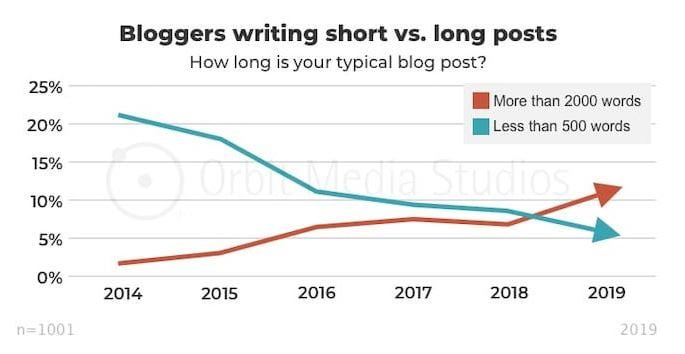
How do you do that? By applying these techniques:
- Long-form wins: Studies have found that the first result on Google is 1,890 words long. Write longer content as it packs a bigger punch.
- Use tons of data: Cite statistics, charts, graphs, and studies to improve the credibility of blog posts.
- Make it actionable: Provide step-by-step instructions, tools, and screenshots so readers don’t have to go elsewhere for more information.
- Promote social sharing: Add social sharing buttons and calls to action to promote readers to share content.
- Format it correctly: Use header tags, short paragraphs, lists, and bullet points to make content easy on the eyes.
- Tone of voice: Think of tone of voice like your brand’s personality. Brainstorm a unique way to write content that encompasses your startup’s values.
PPC is still killer
If you got some money to spend, don’t be shy about PPC.
There’s a reason it’s one of the go-to advertising and marketing channels globally.
It works. And, really damn well at that.
That’s why marketing agencies recommend clients to invest in Google Ads, Bing Ads, and display ads.
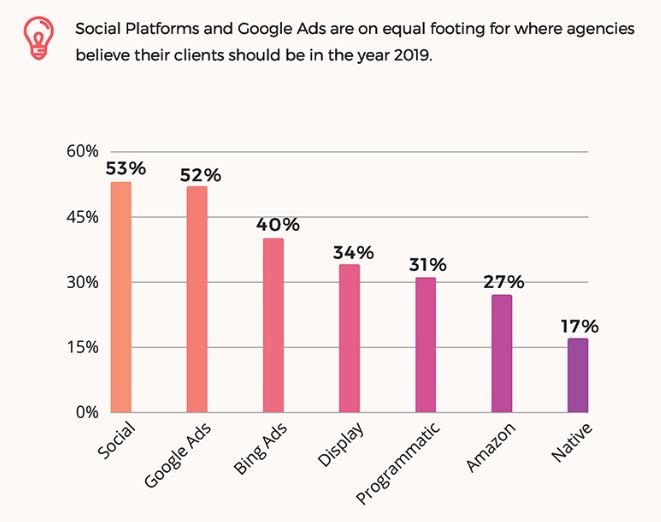
However, you can’t throw a bunch of money at a PPC campaign like a jellybean machine and expect money to come out.
Here are some best practices you need to apply:
- Match the ad to the landing page: Users shouldn’t feel slighted when they click an ad. Match the landing page exactly to the promise of the ad or conversions will tank.
- Test different copy: Some calls to action, headlines, and description will greatly outperform others. Run A/B split tests to find winning combinations.
- Refine the audience: Continually shake off audiences that aren’t moving the needle and dial in on hyper segments generating the strongest ROI.
Blogger outreach
Last but not least is classic outreach.
This is super underrated.
Tech companies use this strategy to get their product and brand in front of a massive audience fast.
Blogger outreach involves contacting industry publications to form a partnership.
Think of it like influencer marketing.

You work out a deal to have content or a product promoted.
Additionally, it’s leverage.
Think about it.
If you get seen on a website that has one million visits per month, you’re leveraging that reach versus creating it organically.
The first way to do so is via guest posting.
This is the process of pitching topics to likeminded websites and writing an article that gets published on their website.
Look at this one I did for SocialMediaExaminer, for instance:
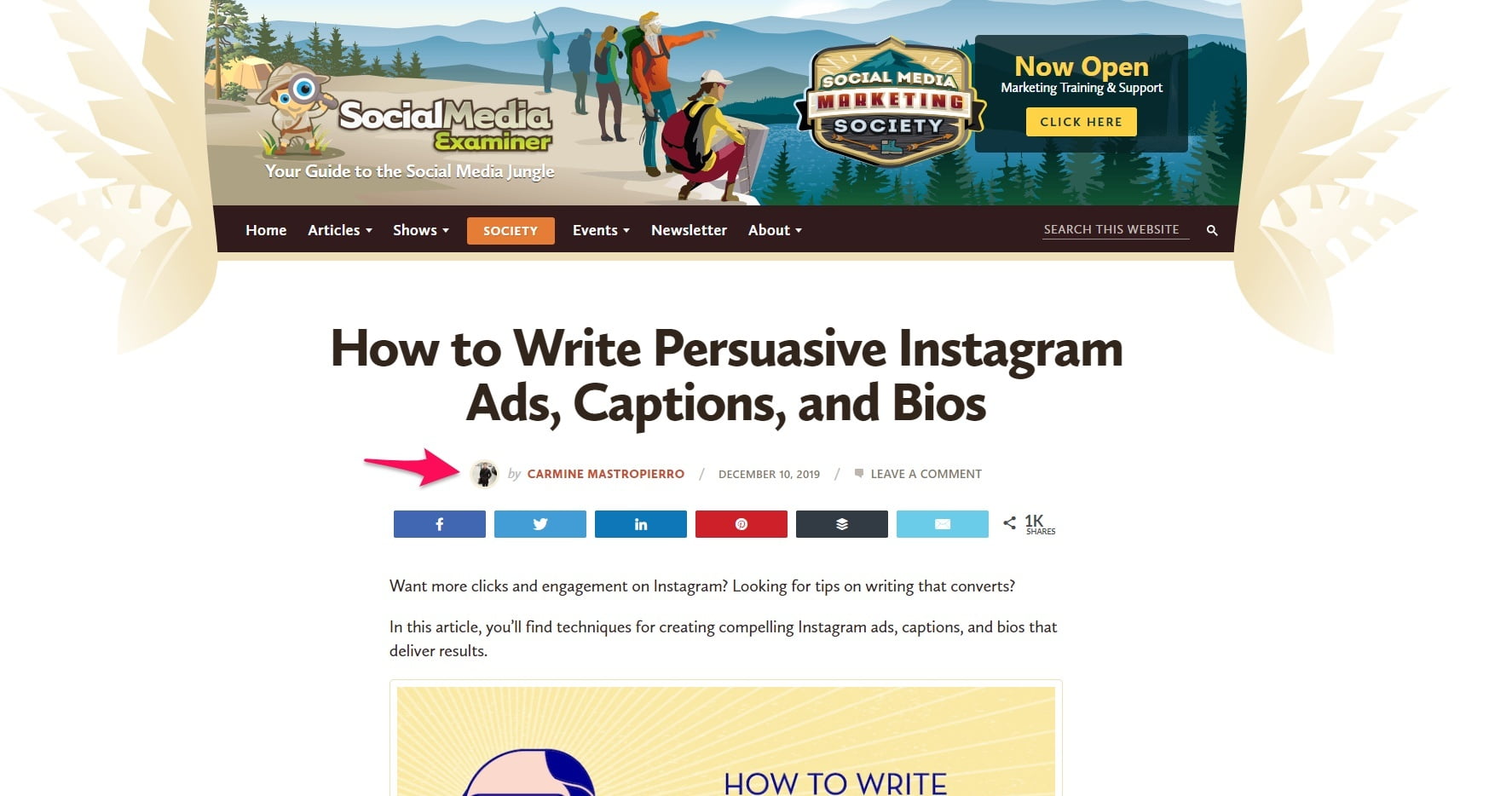
They’re one of the biggest social media marketing websites.
Having my name, face, and website URL instantly generated me clients and exposure.
Check out my article on websites that accept guest posts to learn more about this strategy.
Similarly, you can also use blogger outreach to buy sponsored posts and advertising.
The greatest benefit of this approach is that it’s extremely targeted.
Look at Content Marketing Institute’s advertising page:
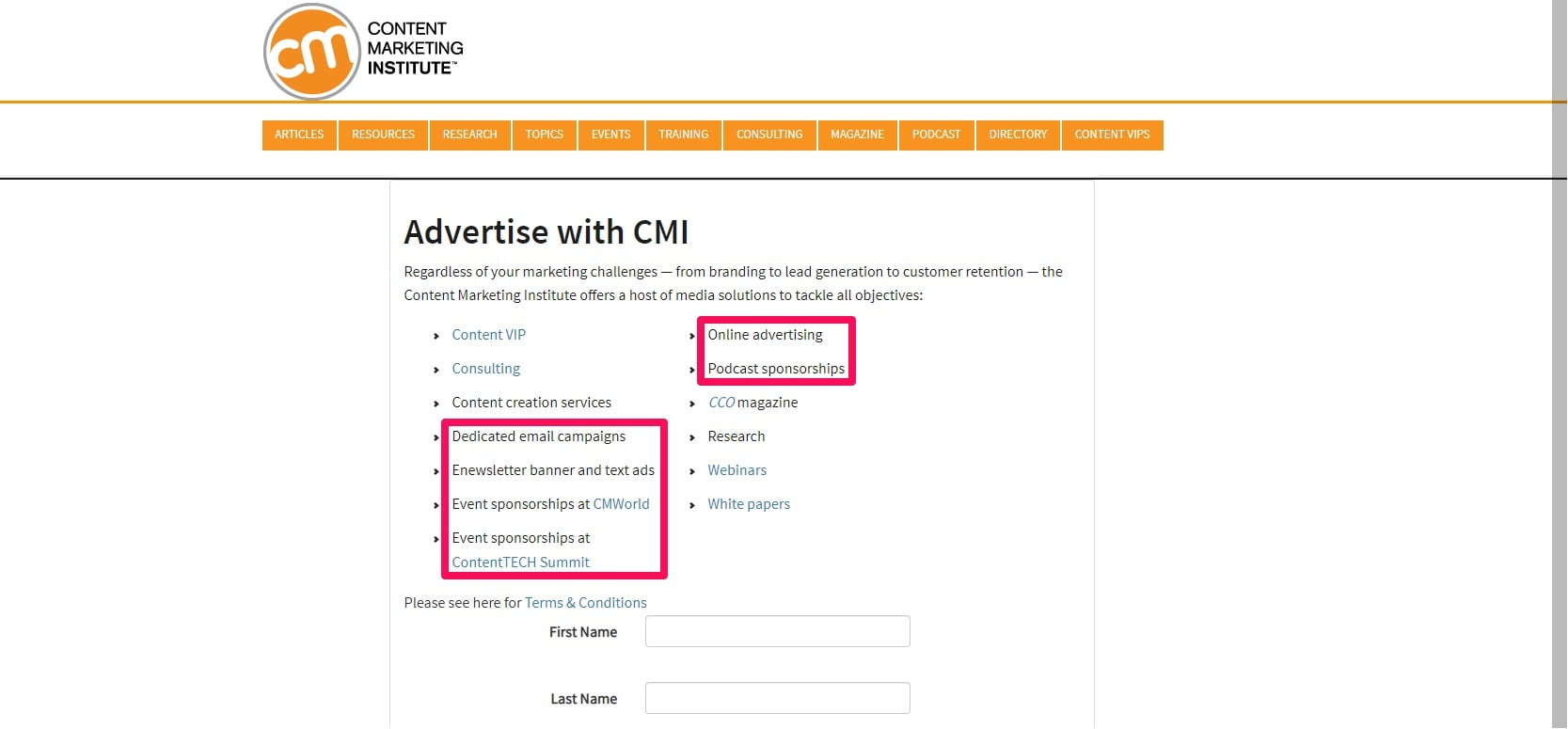
If you wanted to advertise specifically to CMOs and similar individuals, they offer:
- Online ads
- Podcast sponsorships
- Email campaigns
- Enewsletter banners and ads
- Event sponsorships
A.K.A you take their dedicated audience and place your product in front of it.
Look for reputable businesses in your startup space and enquire if they offer sponsorships or advertising.
2. Have a remarketing system (please!)
There’s nothing worse than when I see a tech client of mine who has no remarketing plan.
I mean nada. Zilch. Zero.
…Not a single way to interact with users that visited their website and left.
They’re lost forever.
And, it makes my job much harder because—yes, I’ve helped companies convert on cold traffic very well and grow—but it’s tough.
You need to ensure that you have a system set up in which you collect users information to create more touchpoints in the future.
In fact, it’s been found that it requires approximately eight calls to reach any given prospect.
Not remarketing is the equivalent of disregarding follow-ups.
Don’t make that mistake.
Instead, you can completely automate a system in which you collect user information, send them targeted messages, and drive sales in the backend.
After all, that’s where all of the magic happens anyway.
Very few businesses convert very well on cold traffic.
Instead, it’s done through:
- PPC retargeting
- Email marketing campaigns
- Live chat funnels
- Etc.
I’ll be showing you how to set up a HubSpot live chat system that will generate leads without lifting a finger.
You may have to slightly modify the steps based on what platform your website is hosted on.
Step 1: Install the HubSpot plugin
Hover over the “Plugins” tab on the WordPress dashboard and click “Add New.”
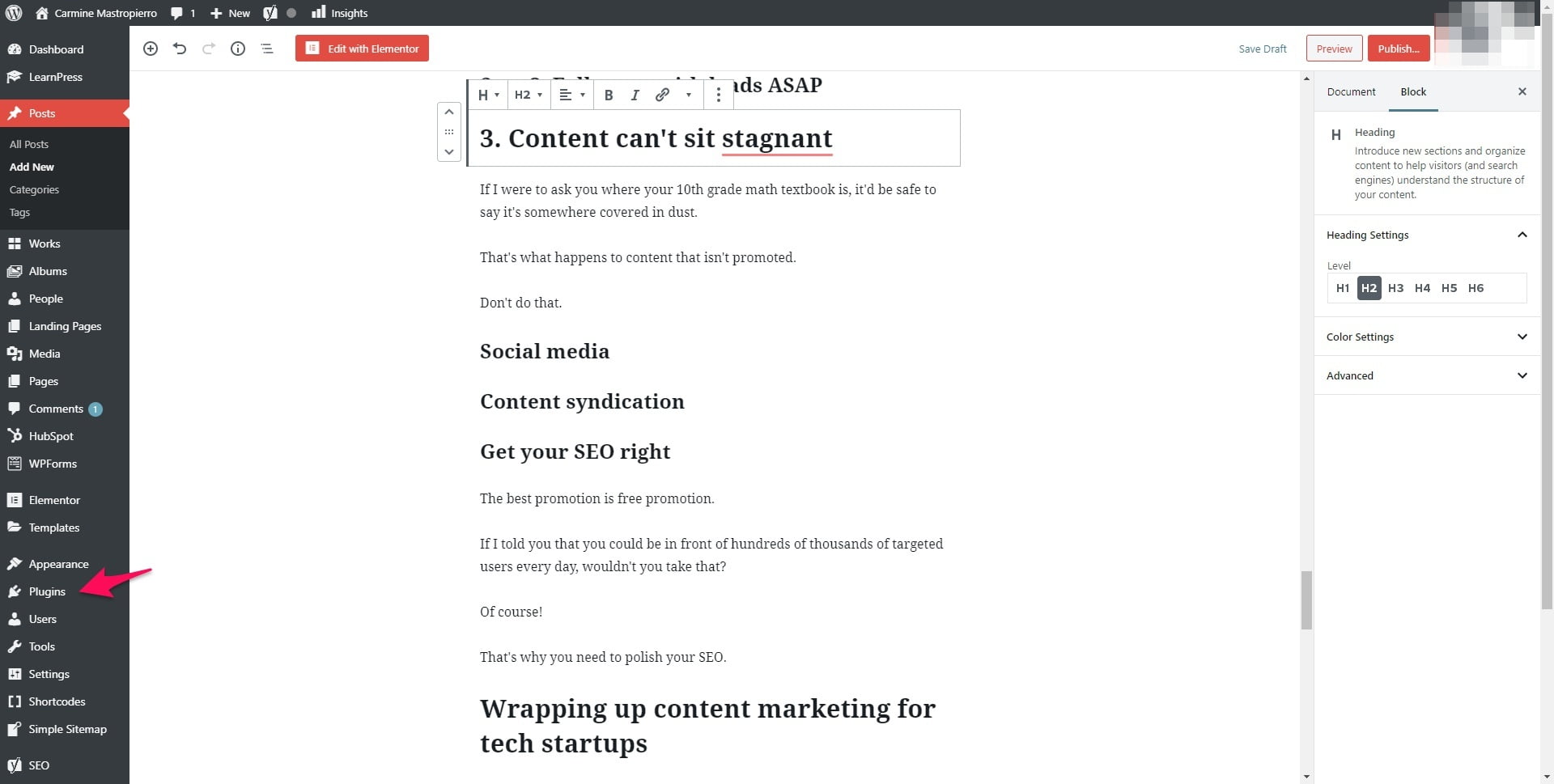
Search for HubSpot and install the official plugin as seen here:
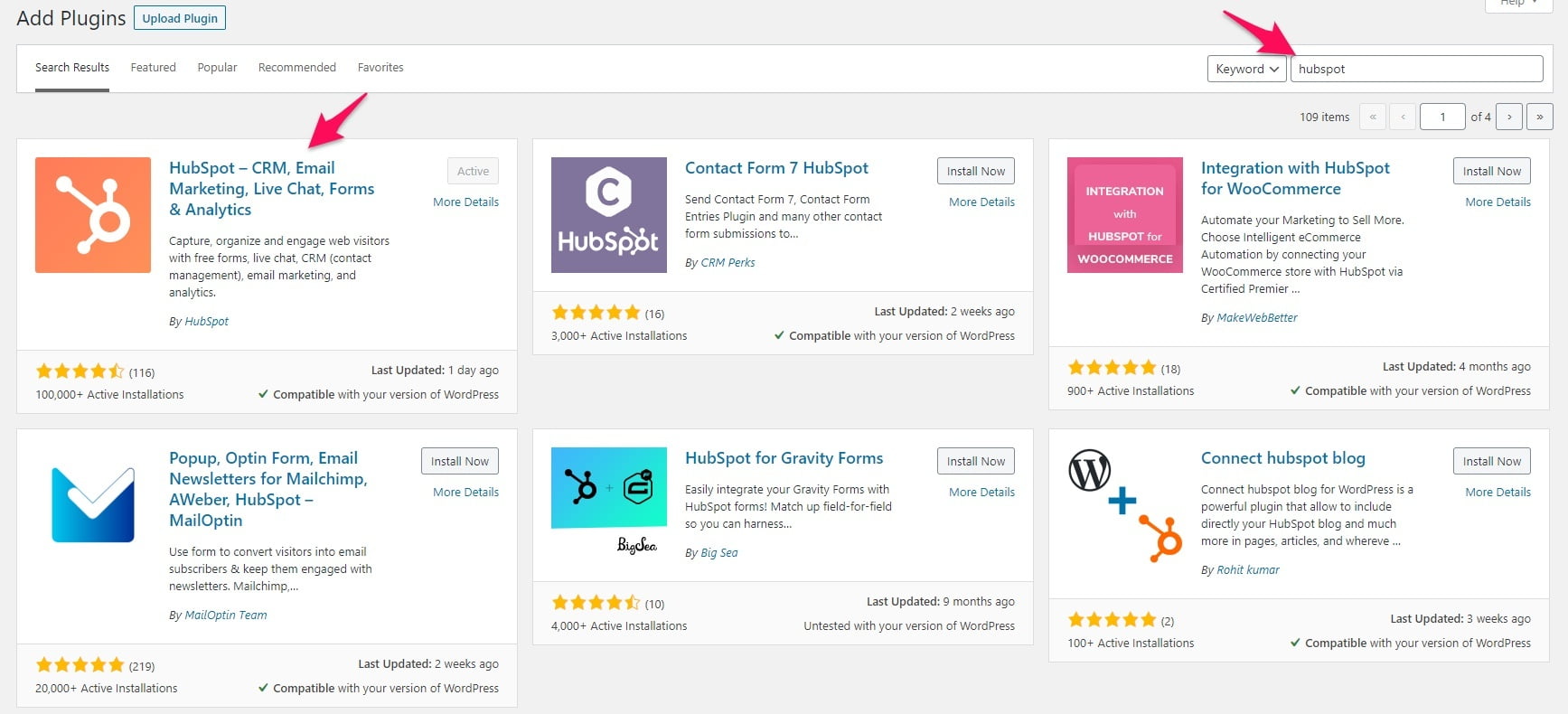
Activate the plugin and move onto the next step.
Step 2: Create live chat prompts
Hover over the “HubSpot” plugin tab on the left sidebar and click “Live Chat.”
Connect a HubSpot account or register one first from here.
Then, click the “Create chatflow” on the top right.
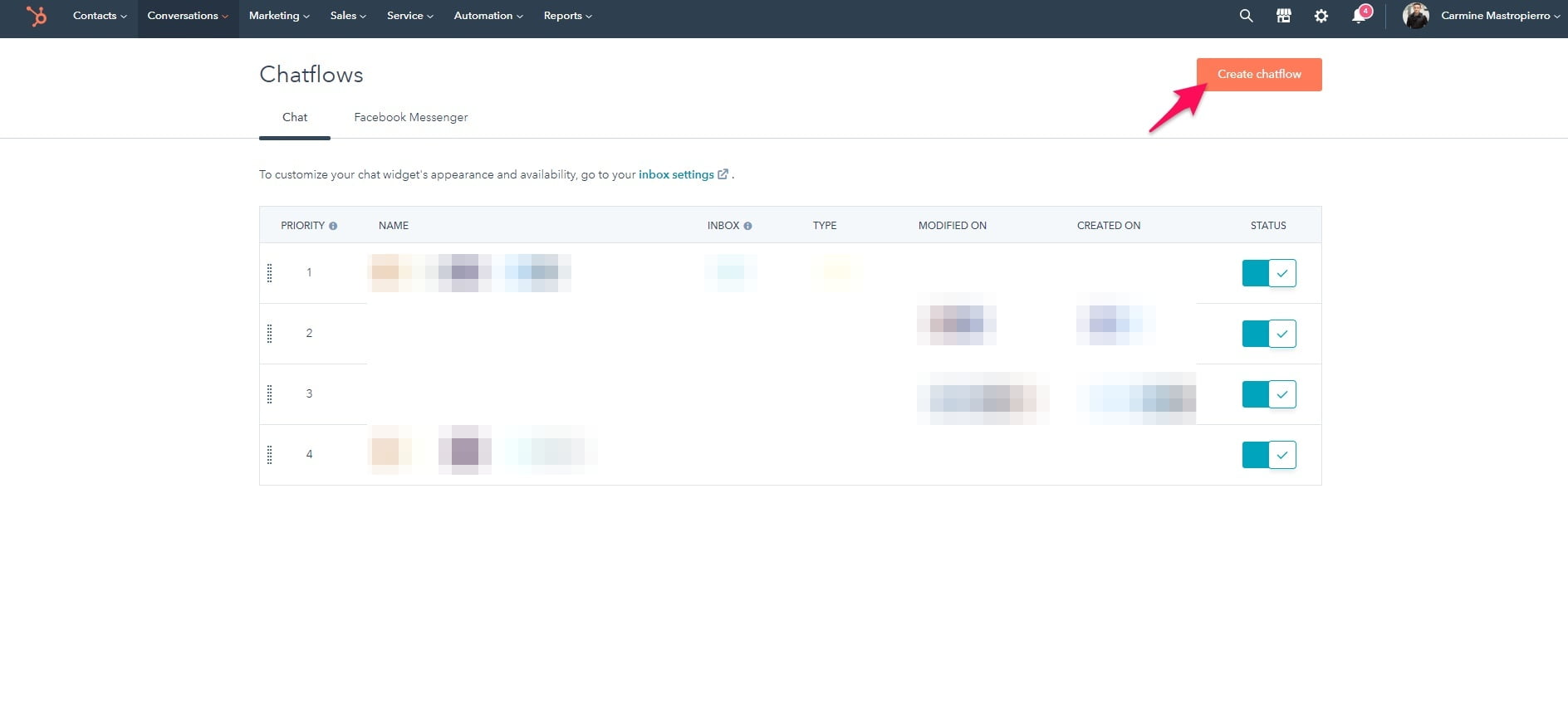
Choose the “Website” and “Live Chat” options.
Tweak the welcome message and whether or not you collect emails on the “Build” page.
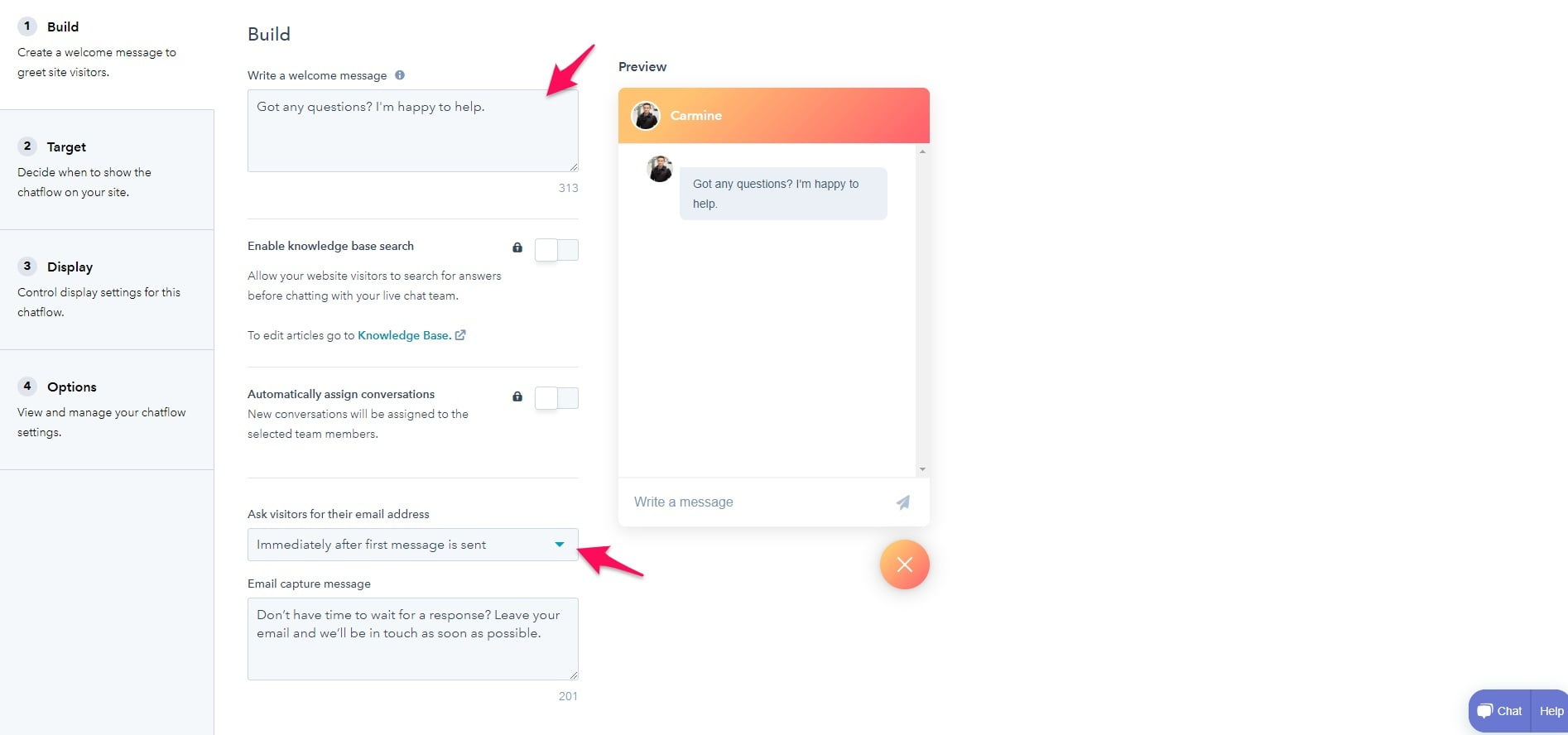
Set the pages you want the live chat to prompt on via the “Target” page.
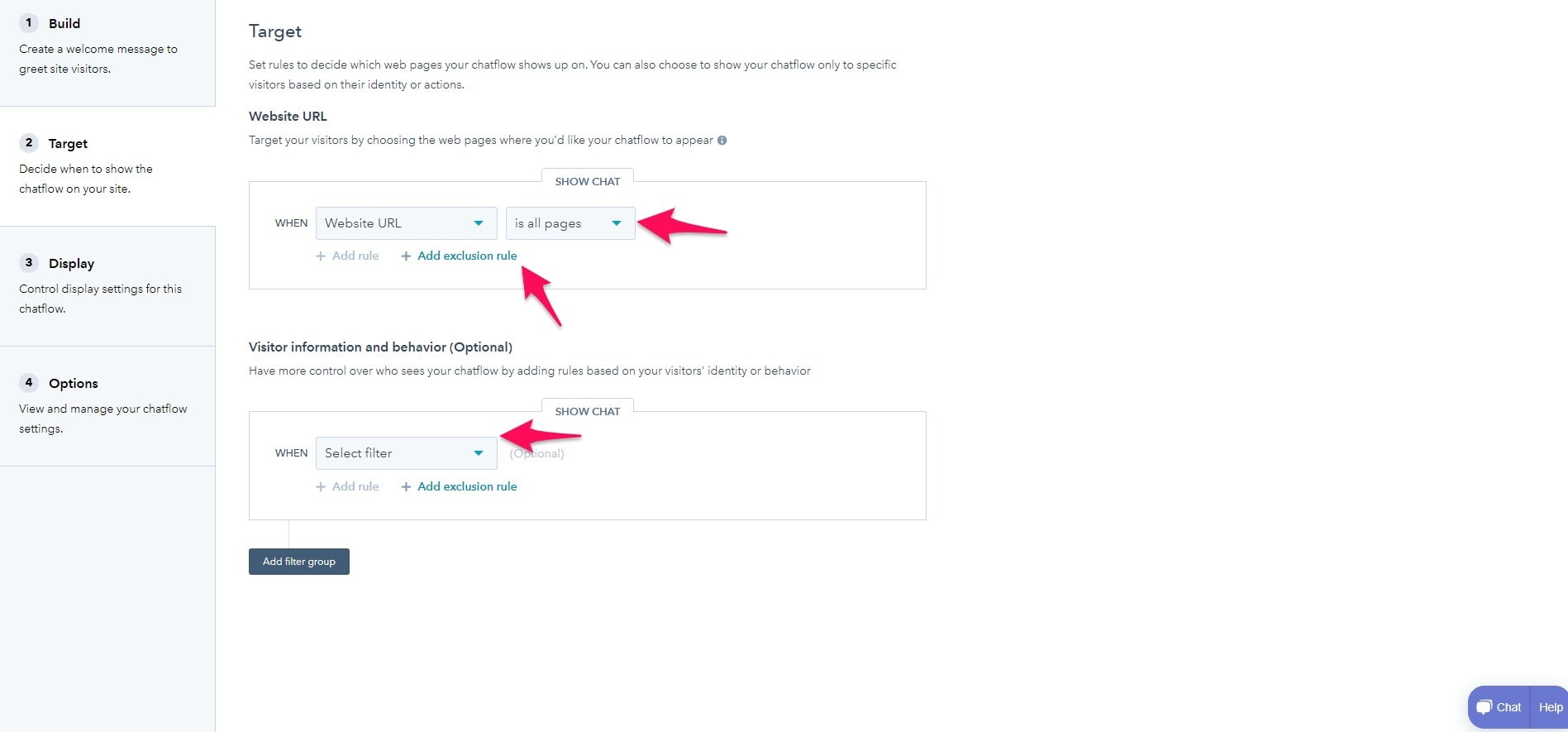
Here are some ideas:
- Use a generic live chat on the homepage.
- Ask service-related questions on product pages.
- Ask “Want to learn more about our company?” on about pages.
- Share interesting content or other resources via live chat on a blog page.
Oppositely, there is the exclusion option.
Use this if you don’t want live chat to appear on certain pages.
Simply click “Add exclusion rule” and paste in a URL.
The “Display” section is where you choose when and how the live chat appears.
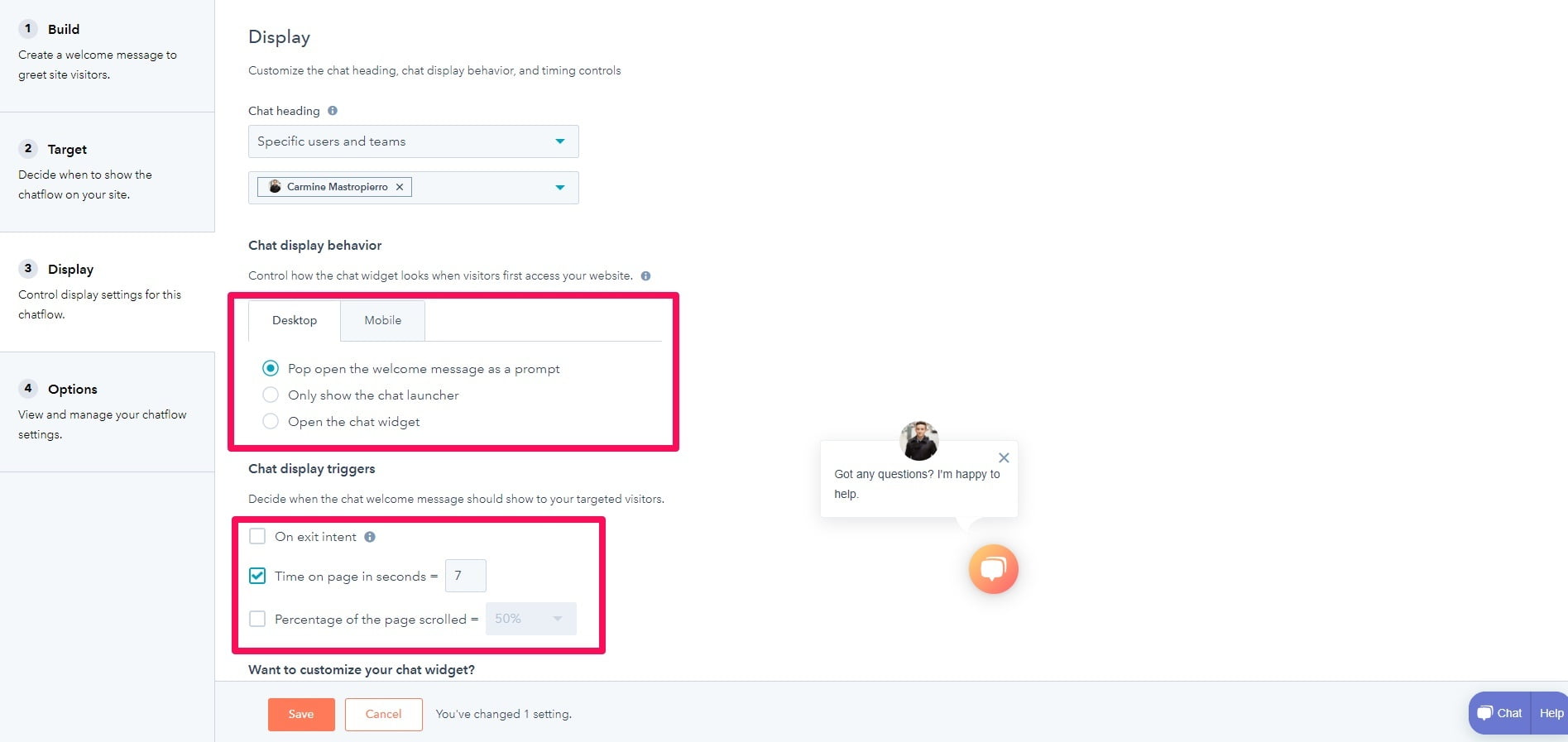
Additionally, you can ask for users emails to have them automatically added as a contact.
I highly recommend you do that. It will play a big role in the third step.
Step 3: Follow up with leads ASAP
After your live chat prompts are published, you will begin receiving inquiries quickly.
Ther are two things you need to do:
- Respond to live chat messages instantly.
- Follow up with leads via email if they submit their email address.
Answer any questions that leads have and always try to give them links to resources that push them further into the sales funnel.
I also suggest offering a free consultation, demo, or other lead magnets while you’re directly speaking with them.
Follow up every couple of days if they submit their email, too.
3. Content can’t sit stagnantly
If I were to ask you where your 10th grade math textbook is, it’d be safe to say it’s somewhere covered in dust.
That’s what happens to content that isn’t promoted.
Don’t do that.
Content needs to be promoted to reach the largest possible audience and have an immediate impact.
I see many tech startups make the brutal mistake of letting content idle.
They don’t send out over social.
They don’t send out an email newsletter.
Nothing.
Rather, they should be doing this:
Social media
New technology and channels pop up like grass, but there’s one that’s stood the test of time: social networks.
These allow you to instantly share content and engage with followers.
But, it needs to be executed correctly.
First, make sure you’re on all of the major networks:
Then, share the latest content.
Some testing is needed here, as well.
Facebook and LinkedIn might blow Pinterest and Instagram out of the water, for instance.
In that case, double-down on the former. Then, apply these strategies:
Use the right hashtags
Hashtags will place content in front of a bigger audience in the snap of a finger.
Every post should include a few hashtags for this reason.
It’s free exposure.
Platforms like LinkedIn will give you automatic hashtag ideas when you create a post like this:
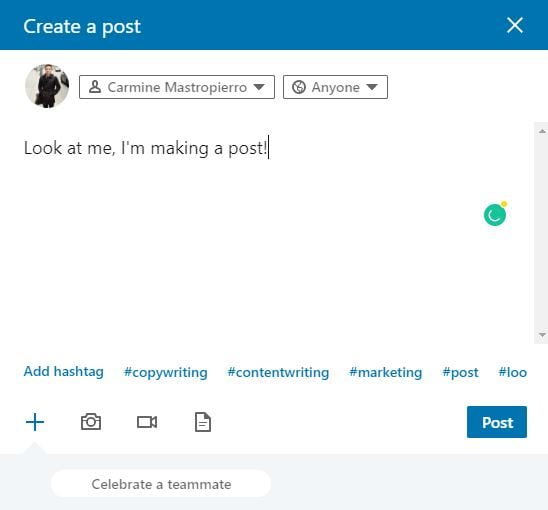
Don’t go overboard or else it looks like spam, but include a good mix.
Tag brands you’ve referenced
An effective way to nurture relationships with potential influencers and receive social shares is by tagging other brands.
Let’s say that you link out to Forbes, Entrepreneur, and Fortune in a blog post.
You could tag all three of these publications and thank them for their resources that helped you create the article.
In some cases, they will share the article or at least respond to you.
Once again, it’s free exposure and setting you up for success later.
I’ve done this and it’s lead to paying clients and guest post opportunities. 🙂
Content syndication
Have you used Medium, Reddit, or similar platforms?
Those are what we call content syndication networks.
They enable users to share and distribute content that was originally published elsewhere.
It increases the return and reach of a given piece of content.
Thus, it needs to be a mandatory part of a tech startup content strategy.
Let’s use Medium as our focus. I’ve used it with great success by doing this:
Step 1: Sign up for an account
Register for a free account via the homepage.

Verify your email afterward.
Step 2: Re-post an article
Click the profile icon and “New Story.”

Since we’re syndicating content, copy and paste a previously published article into Medium’s editor.
Certain media like gifs may not properly paste over, so double-check for any errors or visual bugs.
I also recommend adding a line of text that reads “Check out the original article on our blog” with a link to the post.
This will drive more traffic to back to your startup’s website and also helps Google understand it’s duplicate content.
…Which brings me to the last step.
Step 3: Set the canonical link
Since technically re-posting an article on Medium is duplicate content in the eyes of Google, you have to help them understand its origins.
Click the three dots and the “More Settings” option.
Click “Advanced Options” and paste the original blog post URL into the bottom field.
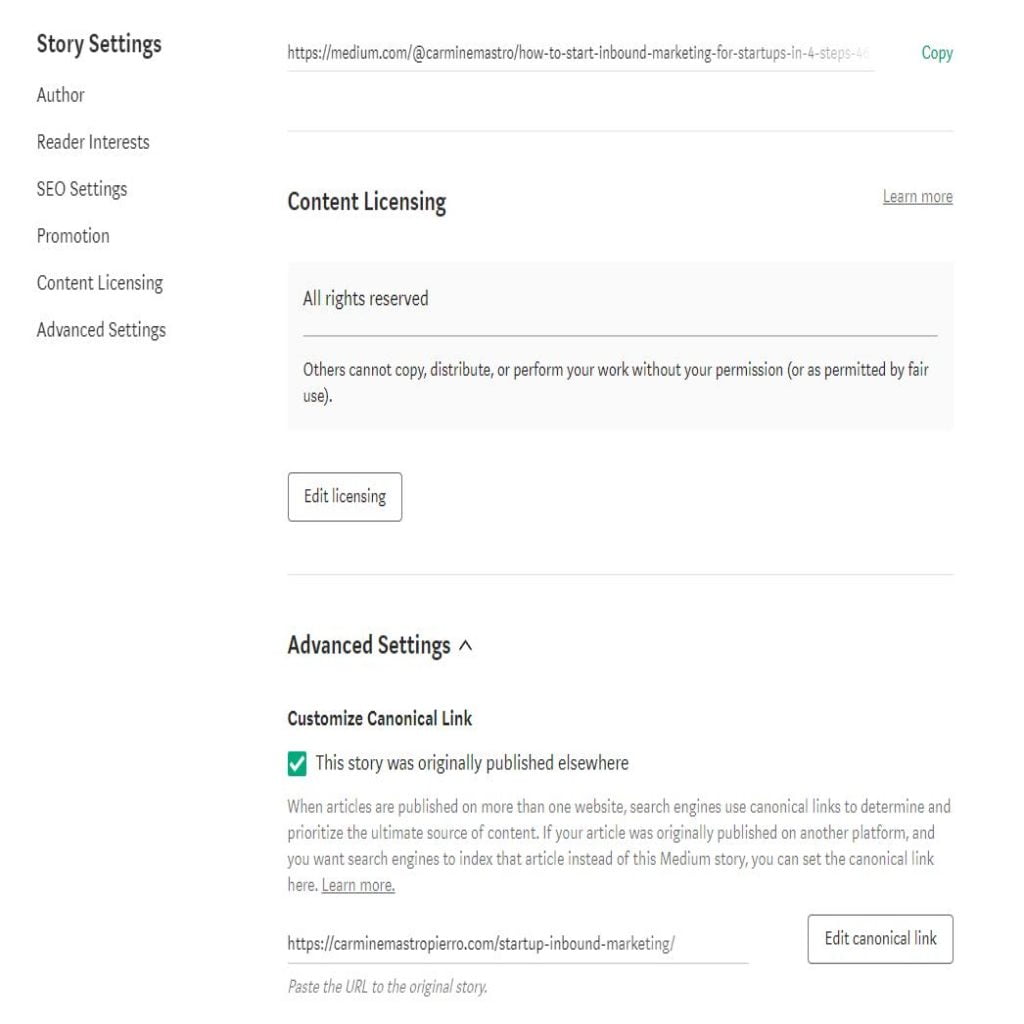
This is called a canonical link.
A.K.A the original source.
Google will index this with higher priority versus the Medium version.
Get your SEO right
The best promotion is free promotion.
If I told you that you could be in front of hundreds of thousands of targeted users every day, wouldn’t you take that?
Of course!
That’s why you need to polish your SEO.
Frankly, if you follow the six tips I gave earlier about blog posts, that’s a big chunk of it right there.
However, you also need to master keyword research.
These are specific search terms you strategically use to get seen by the right users and topics.
Here’s how:
Step 1: Choose a keyword tool
There are thousands of keyword tools.
Let’s keep it simple.
Try using the free version of SE Ranking or SEMrush.
Click “Free Trial” and sign up for an account.
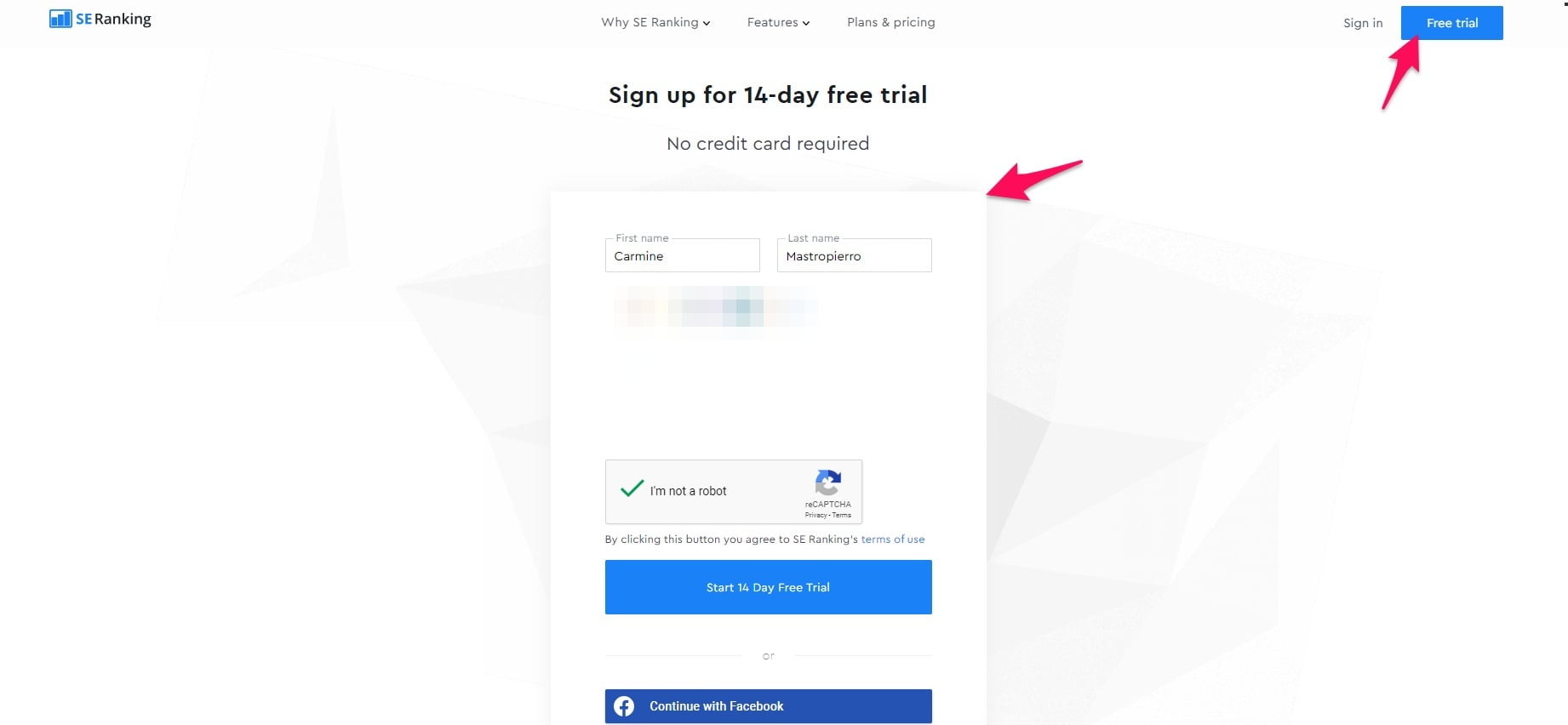
Then, move onto the second step.
Step 2: Start researching ideas
Click the “Tools” tab and the keyword suggestions tool.
Enter a search term related to a topic you’re publishing content about.
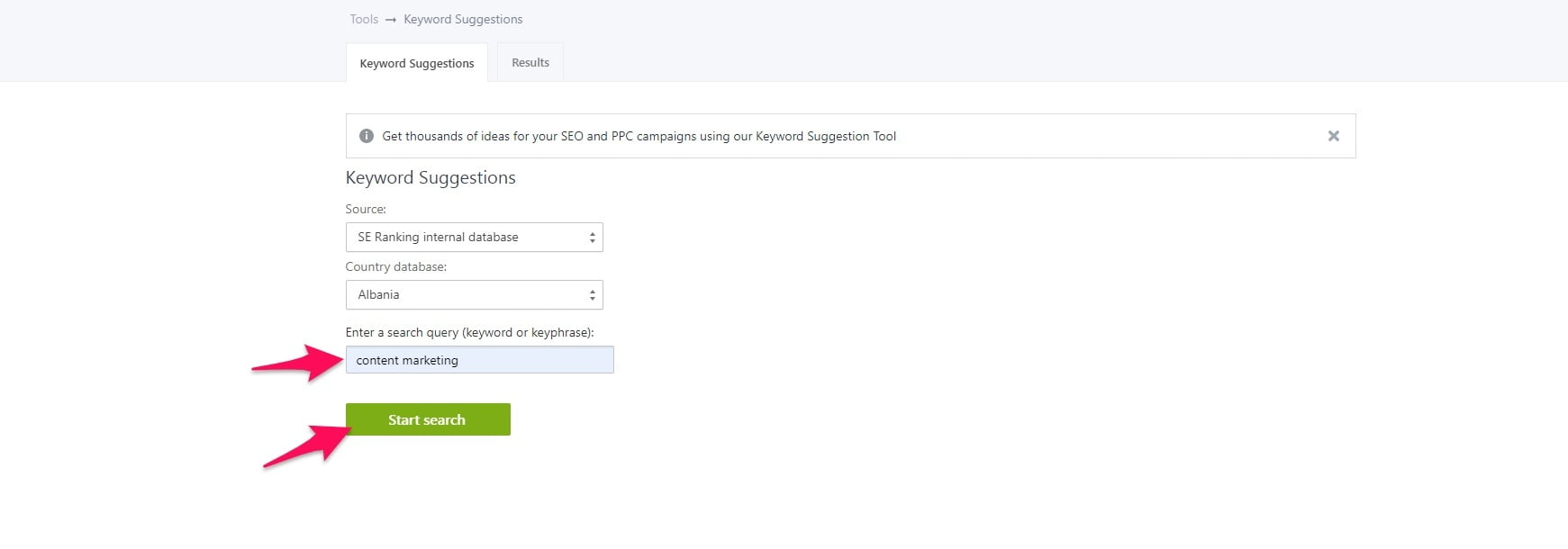
This will give you metrics for that individual search term and suggestions for others.

Step 3: Map the keywords to content
You can’t use keywords randomly.
That’s like throwing paint at a canvas and expecting it to turn into the Monalisa.
Rather, think of every keyword placement like the stroke of a brush.
It has a purpose and meaning where it’s used.
Every piece of content you publish needs a main keyword and secondary keyword.
Ideally, the main keyword is used:
- Once in the title
- In the URL
- In the introduction
- As the alt text of images
- As file names of media
- Within a header tag
- One to three times in the body
The secondary keyword should be sprinkled throughout the content.
This maximizes your odds of being ranked highly for these search terms which results in webs.
Wrapping up content marketing for tech startups
Tech startups can generate customers, authority, and brand awareness in one shot.
But, it can be equally done wrong.
If you don’t remarket, promote content, or choose the right channels, all that effort goes down the drain. 🙁
That’s why the three biggest tips I have are testing several channels, distributing content, and creating a remarketing system.
This automates your lead generation while maximizing the reach of content campaigns.
Feel free to contact me if you need a content writer to take care of this work for you!














